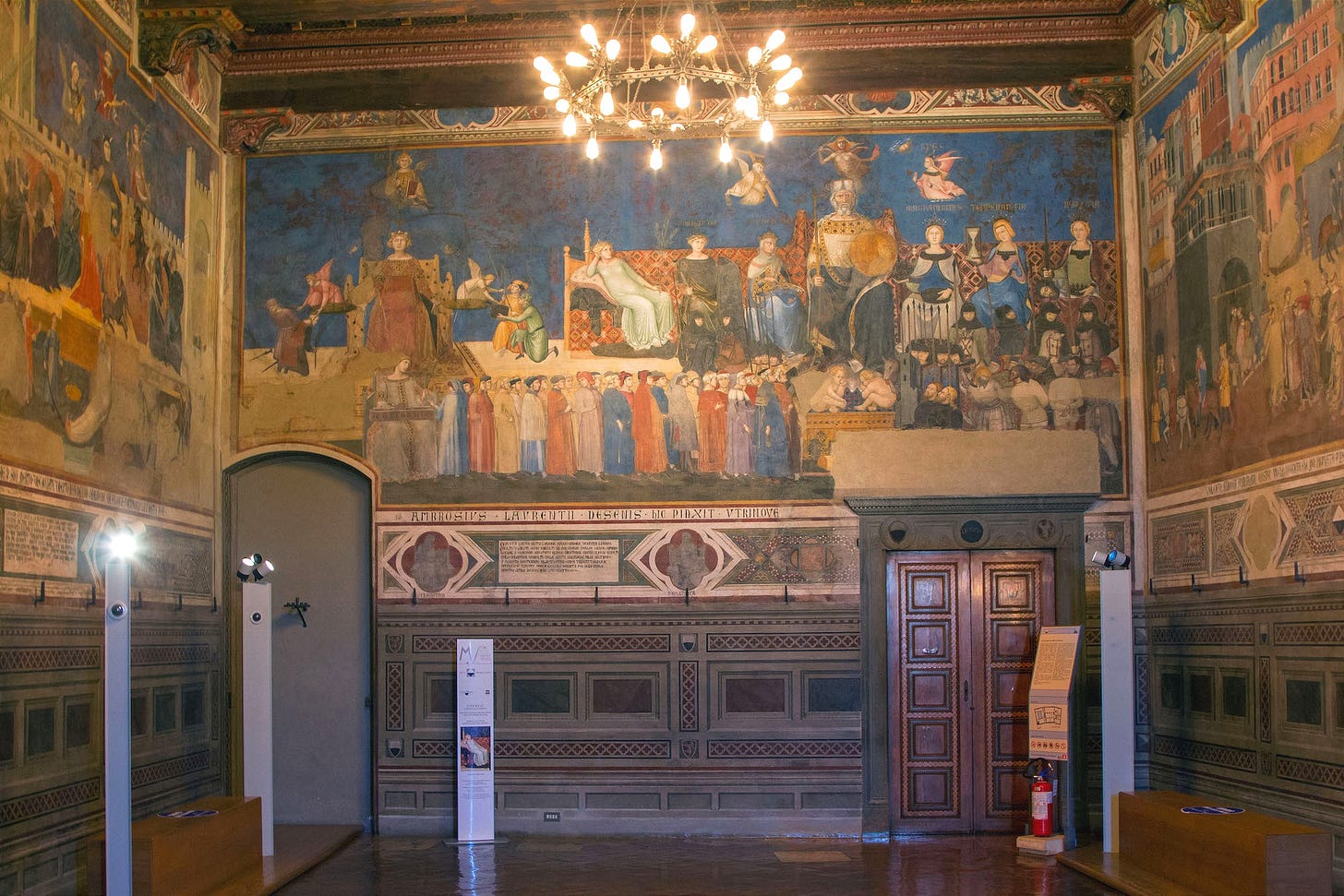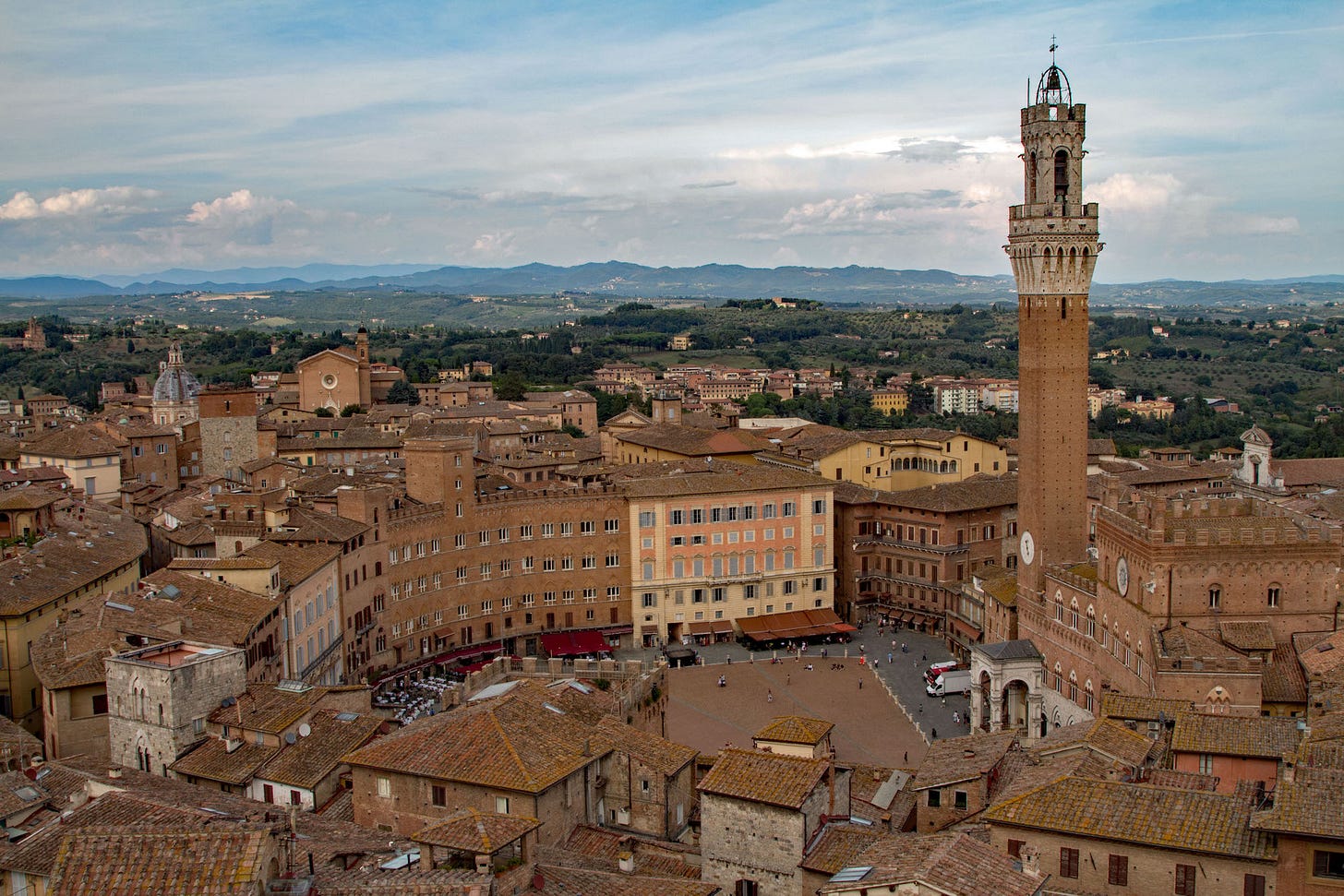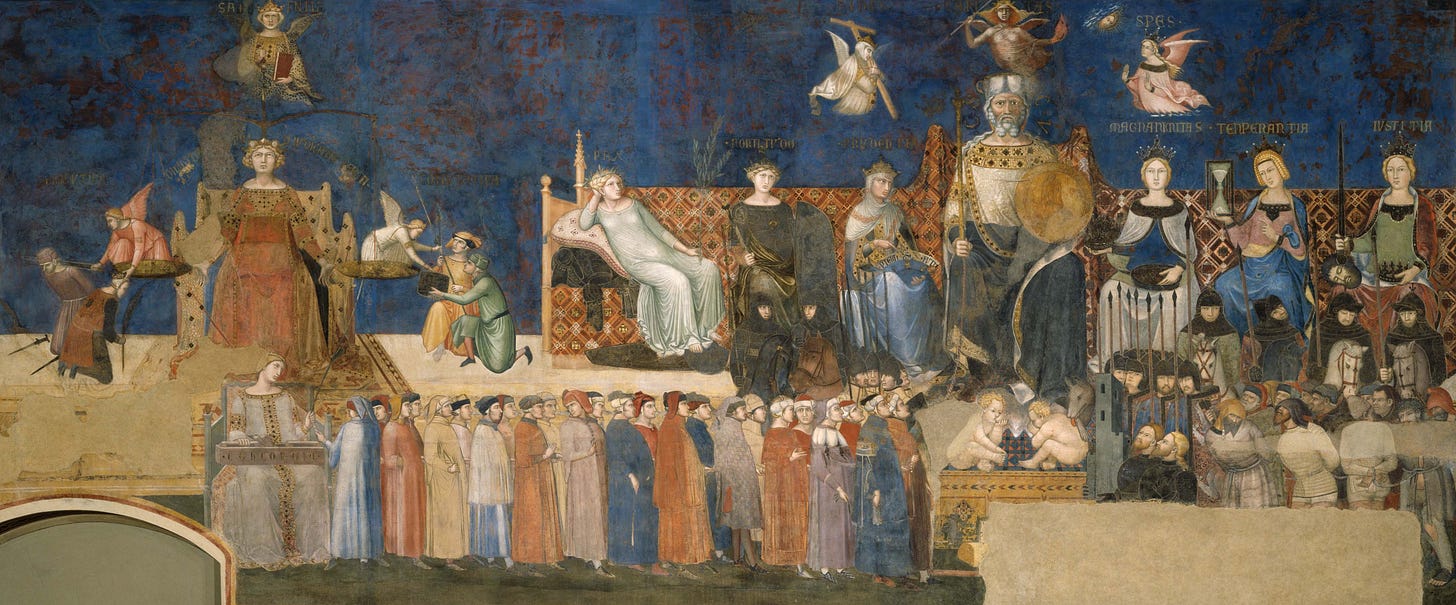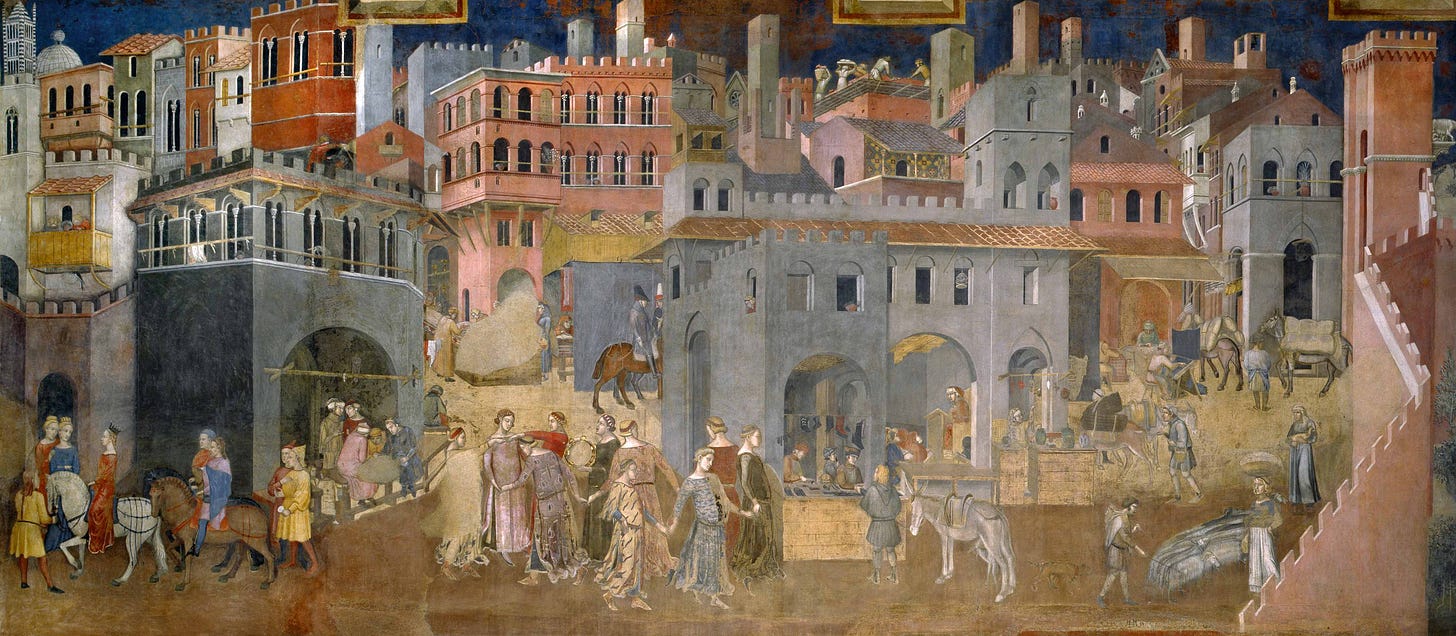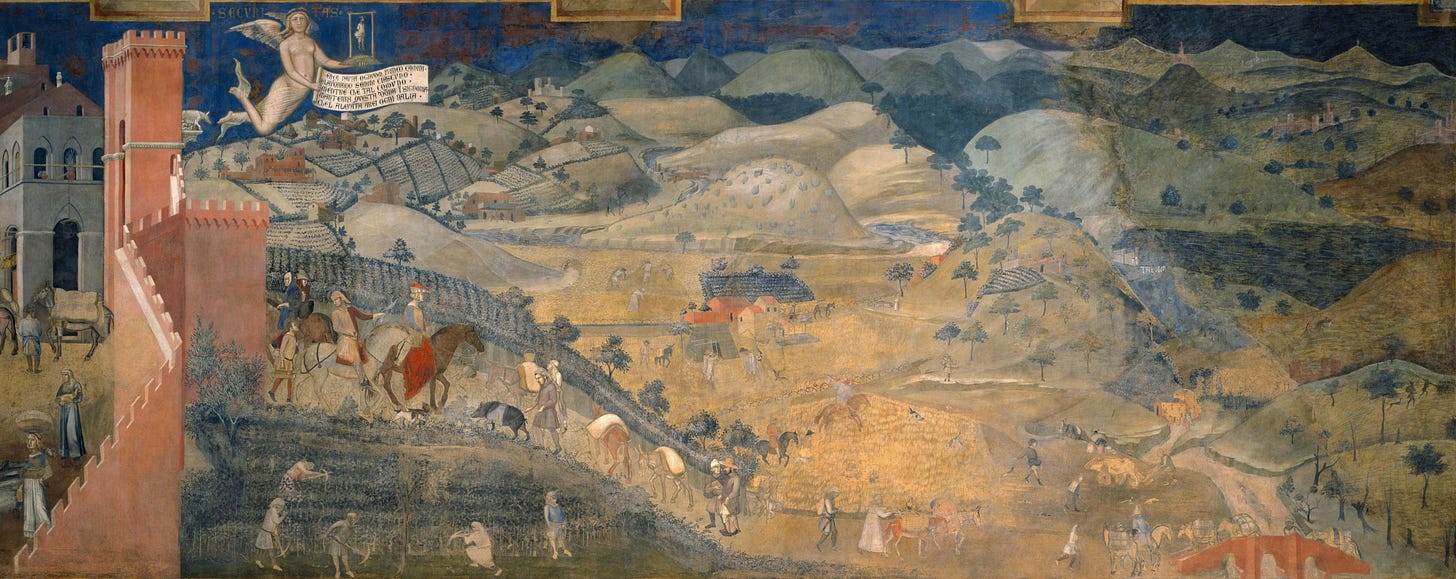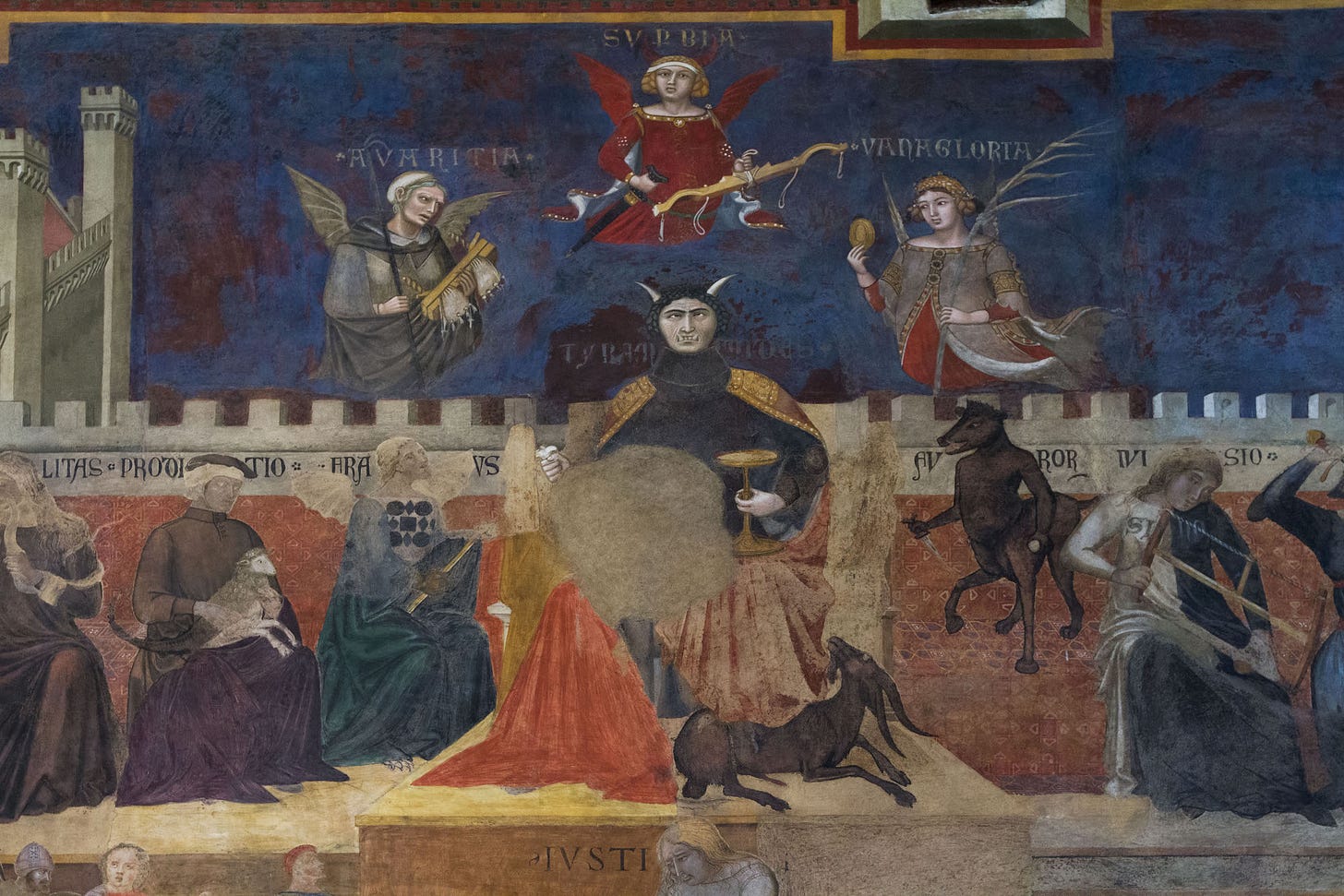Good or Bad Government?
In a small chamber in the Tuscan city of Siena, a forgotten masterpiece of Western art holds up a mirror to the truth of all governments...
Just how committed is your ruling regime to good governance? For the citizens of medieval Siena, such a question was not merely a philosophical indulgence, but a national obsession.
While there are many republics our world today, seldom is there much difference either in their construction, or in the results their governments produce. With the exception of San Marino — currently the world’s oldest existing republic — virtually all other nations copied the models that developed in France and the United States following their respective revolutions.
As a result, it is often taken for granted that a ‘republic’ must necessarily imitate the form with which we are most familiar today. But republics have existed in various forms for millennia, and Italy above all served as the primary laboratory for many such experiments, from Rome to Venice and the medieval comuni of Tuscany.
One that was entirely unique, however, was the Republic of Siena — the fiercest rival of Florence.
During the prosperous years of her golden age in the early 14th century, the city state prided herself upon her commitment to that simplest, yet most elusive of phenomena — buongoverno, or 'good governance'. It is indeed to that ideal that we owe a most extraordinary and groundbreaking work of forgotten art, known as the Allegoria ed effetti del Buono e del Cattivo Governo, or 'Allegory of the Effects of Good and Bad Government'.
Seven centuries later, this work still holds up a provocative mirror to the pretensions of all governments, as does the regime which commissioned it. Today, we explore the history of this masterpiece, and break down what it reveals about how good and bad governments impact life wherever it is lived — whether in the urban metropolis, or the idyllic countryside…
The Council of Nine
Brought to power in the February of 1287, following the collapse of the Republic of Siena’s previously all-powerful and anti-Papal Ghibelline establishment, the Government of the Nine — called the Noveschi — constituted an extraordinary new interpretation of governance.
The nine councillors would belong to the 'middle class', of traders, manufacturers and bankers. But terms of office lasting four or more years — common in 21st century republics — would have been entirely alien to this Siena. For the Nine would serve terms of just two months before a new council was chosen, and members could seek re-election only if at least twenty months had elapsed since last holding public office, resulting in a frequent and broad rotation of power in the state.
For the entirety of their eight-week mandate, the Nine resided in the Palazzo Pubblico, separate from their families, with their living expenses covered by the public purse, so as to minimise the risk of temptation or malign external influences. To that end, while respected in the city and permitted other privileges, the nobility was excluded from election to the Nine, as were doctors, lawyers and notaries — professions considered to pose the greatest risk of a conflict of interest.
By 1337, times were good in the Tuscan south, as the yields of the countryside were bountiful, and the Sienese coffers overflowed. It was in this moment that the Nine tasked Ambrogio Lorenzetti, the city's greatest painter, to decorate their Council chamber with a celebration of Siena's civic virtue.
Over the course of two years, the middle-aged master would produce something extraordinary. For this, among the first fresco cycles since Ancient Rome that did not depict a religious scene, is both a celebration, and a warning, of a kind that is timeless in its message, and arresting in its execution…
The Allegory of Good Government
In the Allegory of Good Government, we see the personification of virtues in a state that is ruled well.
Ushering in the scene on the left, the winged figure of Sapientia (‘Wisdom’) bears the book of knowledge and wields the scales of distributive and commutative justice, which good government will seek to balance, as they are here in the hands of Lady Justice herself.
From the two scales descend two cords, intertwined and passed by a procession of worthy men until this, the thread of justice, arrives at the hand of the wise old man who towers over the Council on the right. He is Old Father Siena himself, the city incarnate, dressed in the black and white of the Republic’s arms, a sceptre in one hand, a shield in the other, while the three theological virtues of Faith, Hope and Charity hover above.
Below their angelic forms, the four cardinal virtues of Fortitude, Prudence, Temperance and Justice counsel him from his left and his right. Magnanimity, too, is seated at their side, while the snowy and fair lady of Peace, allowed sweet rest by the presence of all the others, reclines at the heart of the scene, gazing serenely at the consequences of this good government on the wall adjacent…
The Effects of Good Government in the City
In the Effects of Good Government on the City, we see urban life in a city governed wisely.
Trade thrives, the markets are full, music sounds, the people are joyous and the city is beautified. The houses are robust and their ornamentation dignified. The city grows, and new palaces are raised, while the citizens are elegantly clothed, while the dance in the square heralds the reign of harmony.
The walls are maintained and the city is safe, while the spire and dome of the Cathedral, imitating those of their real world counterparts, is the shining crown of Siena. Yet good governance is felt not merely in the city, but beyond too…
The Effects of Good Government in the Country
In the Effects of Good Government in the Countryside, we see citizens venture into the hills, unafraid of harassment or violence, where the fields are organised and worked and the roads robust and clean. This is a land where Justice has disarmed the wicked, both inside and outside the walls.
Securitas, the personification of ‘Security’, hovers above the city gate, unfurling a banner which reads:
“Without fear all may travel freely and each may till and sow, so long as this commune shall maintain lady Justice their sovereign, for she has stripped the wicked of all power”
In the well-governed state therefore, the countryside, the true source of the wealth of nations, is no junior partner to the city, but her equal in prestige, and virtuous rule will never take this for granted.
But Lorenzetti shows us too, what happens when Lady Justice is overthrown..
The Allegory of Bad Government
Keep reading with a 7-day free trial
Subscribe to INVICTUS to keep reading this post and get 7 days of free access to the full post archives.



